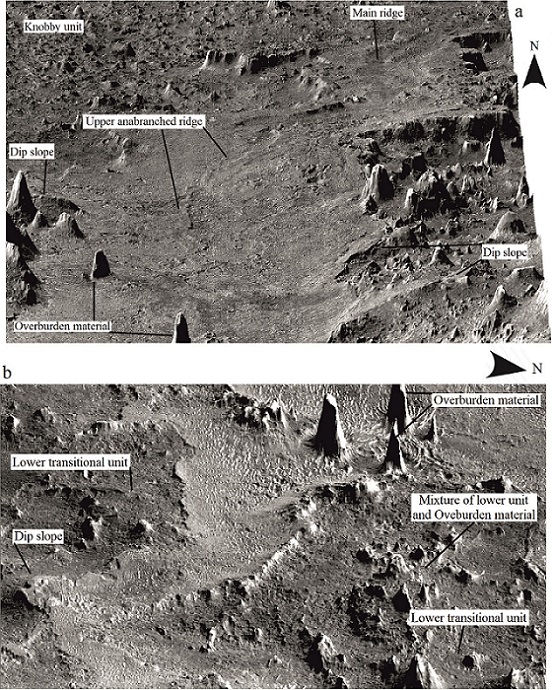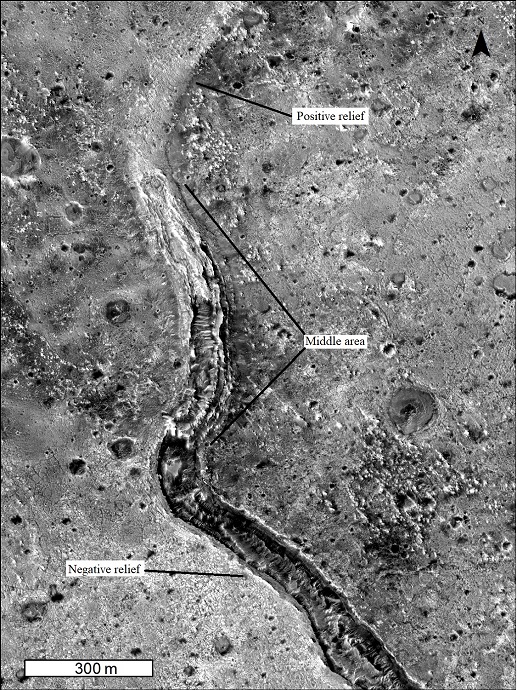- 1The Open University, Milton Keynes, United Kingdom (melissa.mirino@open.ac.uk)
- 2Natural History Museum, London, United Kingdom
Introduction: Inverted channels are sinuous ridges comprising fluvial facies, which have gained a positive relief due to differential erosion [e.g., 1, 2]. Many have been found preserved on Mars in terrains dated between the Mid-Noachian to Early Hesperian in the region of Arabia Terra [1, 3, 4]. The distribution of these features is well known [e.g., 2, 3] but timing, geological settings, their relative timescales of liquid water stability and the nature of the early climate under which fluvial deposition was possible are still under debate. We present results from studies conducted on three morphologically different inverted channel systems in the region of Arabia Terra: Arago Dorsa (within the Arago crater), Cantabras Dorsum and Piscinas Serpentes (in Meridiani Planum). The analysis includes interpretations of the formation settings of the three systems and estimation of the volume of preserved alluvial materials and the consequent required period of fluvial activity for such deposition.
Methodology: Digital morphostratigraphic maps (scale 1:10,000) were constructed using ArcGIS software using 25 cm/pixel HiRISE images [5]. A CTX mosaic [6] was used to study the general context of the study area, and to assist the analysis of stratigraphy. HiRISE DEMs [7] were used to calculate thicknesses of units interpreted as fluvial facies and to characterise and interpret the stratigraphic relationships of the different geological units. When HiRISE DEMS were not available, the HRSC-MOLA DEM [8] was used. The ridges’ morphometric parameters (length, thickness, width) were used to estimate both the preserved volume of alluvial material and the duration of fluvial activity of the systems, assuming sedimentation rates of 0.01-0.7 m/Kyr from terrestrial comparisons [4, 9].
Inverted channel types and settings: The Arago Dorsa ridges are the result of channel belt aggradation [10], as shown by the presence of a well-organized multi-level structure made of candidate channel fills and overbank deposits. We interpret the overall structure as a candidate relict aggrading fluvial fan preserved within a continental highland basin in a distal portion from the source where inverted channel belts are usually formed [11]. Cantabras Dorsum represents a complex package of fluvial sediments, and presents two distinct ridges. The smaller, a sinuous flat-topped ridge with a rectangular cross-section [following 2], is developed on top of a wider one (Fig. 1). We interpret the structure as alluvial deposits deposited by an avulsed channel on the floor of a wider valley which progressively reduced the cross-sectional area, terminating in a smaller channel now expressed by the upper inverted ridge. Piscinas Serpentes presents a network of fine-scale valleys that transition downstream (north of the studied site) into pitted channels and finally ridges (Fig. 2). The ridges of Piscinas Serpentes, are more likely the result of channel fill in a ribbon-like channel.

Figure 1: HiRISE-DEM oblique view of Cantabras Dorsum. Vertical exaggeration = 5 times. a- Main ridge (9.13°N, -5.47°E). b- Lateral oblique view of the upper ridge (9.13°N, -5.48°E).

Figure 2: Detail of Piscinas Serpentes system (ESP_048489_1845; 4.51°N, -1.17°E), where the passage from positive inverted relief in the northern part of the image to negative relief in the south is visible.
Estimation of volume and timing for fluvial deposition: The estimated vertical thickness of the ridges and the estimated duration of fluvial activity (Table 1) are in line with those measured for terrestrial analogues [12]. Aggrading systems like Arago Dorsa and Cantabras Dorsum should have been stable for between 104-106 years.
Table 1: Morphometric data of the studied systems and estimation of volume and formation timescale of fluvial activity.
|
System |
Vertical Thickness (m) |
Exposed Length (m) |
Width (m) |
Volume of alluvial material preserved (km3) |
Terrestrial analogues sedimentation rates (m/kyr) |
Formation time scale (Myr) |
Approximate fluvial activity (Yr) |
|
Arago Dorsa |
50 |
25,000 |
18,000 |
22.5 |
0.01–0.7 |
0.07-5 |
105-106 |
|
Cantabras Dorsum |
35 |
100,000 |
2000 |
7 |
0.01–0.7 |
0.05-3.5 |
104-106 |
|
Piscinas Serpentes |
10 |
10,000 |
90 |
0.009 |
0.01–0.7 |
0.01-1 |
104-106 |
Conclusions and implications for martian climate: Our study supports long-duration fluvial and aqueous inputs to allow significant thicknesses of fluvial aggradations and/or avulsions to occur in a variety of settings across Arabia Terra (a crater/basin and valleys). It also shows a distributed source of water in Arabia Terra. Geological settings where inverted relief developed, their morphometry and the estimated formation time are similar to terrestrial analogues [12], suggesting that similar environmental conditions are likely to have characterised the two planets at the time of fluvial activity. The obtained results are better explained with a stable hydrological cycle which would have been required to allow migration and aggradation in such a large region, probably sourced from precipitation both in the area and upstream.
References: [1] Davis et al., (2019), JGR Planets, 10.1029/2019JE005976. [2] Mirino et al.,(2020), LPSC 2020, LPI Contribution No. 2326, 2020, id.1492. [3] Davis et al., (2016), Geology, G38247.1. [4] Balme et al.,(2020), JGR Planets, https://doi.org/10.1029/2019JE006244. [5] McEwen et al., (2007), JGR, 112:E05S02. [6] Dickson et al., (2018), LPSC 2018, LPI Contrib. No. 2083. [7] Davis (2019), https://doi.org/10.6084/m9.figshare.c.4330838.v1. [8] Fergason et al., (2018). U.S. Geological Survey, http://bit.ly/HRSC_MOLA_Blend_v0. [9] Colombera et al., (2015), Geology, 10.1130/G36385.1. [10] Mirino et al., (2021), EPSC 2021, https://doi.org/10.5194/epsc2021-311, 2021. [11] Ventra & Clarke (2018), Geological Society of London, 10.1144/SP440.16. [12] Zaki et al., (2021), Earth-Science Reviews, https://doi.org/10.1016/j.earscirev.2021.103561.
How to cite: Mirino, M., Balme, M., Fawdon, P., and Grindrod, P.: Evaluation of style, settings and timing of martian fluvial deposition troughs inverted channel studies., Europlanet Science Congress 2022, Granada, Spain, 18–23 Sep 2022, EPSC2022-559, https://doi.org/10.5194/epsc2022-559, 2022.

